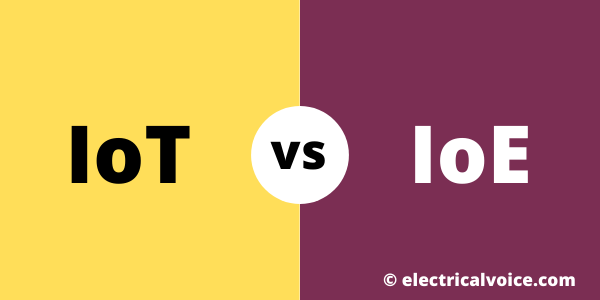Devices, when connected, can give us many useful services. Remember when our smartphone was just a Cellphone? We could call or text but now we can monitor our health, read books or listen to any audio we wish and do many more such things. Now imagine if the other ‘dumb’ devices in our house could also provide us with this luxury. For a device to be smart it doesn’t have to be a supercomputer itself, it simply should be connected to one. This is what introduced the concept of the Internet of Things.
With IoT, we can control tasks we do every day without any human interaction. If physical devices are connected to the internet and relay their chores to other devices, we have a sophisticated system of Internet of Things in our lives.
Internet of Everything is a relatively new term and hence the confusion between the Internet of Everything (IoE) and the Internet of Things (IoT) arises. Both of them help to increase productivity, efficiency, accuracy and help to improve the quality of life. Let’s know more about these two and also get to know how they are different from each other.

IoT vs IoE
The differences between Internet of Things and Internet of Everything are as follows.
| Internet of Things | Internet of Everything |
| Connection of physical devices to the internet enabling connectivity and exchange of information. | The extended concept of the Internet of things which enables connection of people, process, data and things. |
| Communication occurs between Machine to Machine. | Communication occurs between Machine to Machine (M2M), Machine to People (M2P), and technology-assisted people to people (P2P) |
| Less complex comparatively and part of a bigger IoE system | Much more complex than IoT |
| Network+ things | Network+ things + people + data + process |
| Most people are now familiar with IoT | Relatively new concept |
| It has a goal to form a framework of interconnected networks where there is no human involvement how so ever. | It has a goal of turning information into actions and making decisions based on data. |
| It has only one pillar ie. the objects. | It has 4 pillars. |
| Subsets of the Internet of Everything and one generation before it. | Superset of Internet of Things and a generation after it |
| Example: connecting food and people in a supply chain | Example: Smart surveillance, health monitoring devices. |
What is Internet of Things?
Internet of things is a term about expanding the power of the internet and not just limiting it to computers and smartphones but also a whole range of other physical objects and environments.
The scope of IoT doesn’t just limit it to the connection of devices but also to sense, analyze, process or relay the data generated by a running application.
They are used to gather information, send information, or both, thus creating a network of physical things. The gathered data is sent to the cloud where the IoT gateways or other edge devices analyze these data. Thus the basic requirement of IoT is to have a good connection and communication protocols.
IoT often is referred to as ‘smart’. IoT has the power to drastically modify our lives, from managing our health, our homes to automating most jobs for us.
IoT has already been incorporated in many fields and is emerging anew in many more. IoT has been used to monitor traffic, air pollution, energy consumption levels across cities. For business, it has been easy to understand the conditions, their customers and usage of their assets and where to invest better.
On an individual level, IoT has been used to monitor the health and increase the quality of our lives. One such significant implementation is in our homes. Smart homes are a concept based on IoT and are now immensely popular.
While ensuring comfort, they also make sure safety is taken care of. They can be easily customised based on the needs of individuals. All devices are yet to be connected and expand the framework. The potentiality of IoT is limitless and we are still at its infant stage. There is so much more yet to be unravelled in this field.
What is Internet of Everything?
IoT systems are capable of functioning, monitoring themselves without any human interaction. The Internet of Everything extends this concept and supports machine to people, people to people and machine to machine.
IoE is linked to complex, intelligent systems involving people and processes. IoE is a broader concept than IoT and has been introduced only recently. It is an ecosystem where everything is interconnected.
The four main pillars of IoE are
- Things (objects)– any physical object that generates data.
- people- they are the source of an intelligent connection; everything in here is done by and for the people.
- data- data sources grow so it is important to distinguish between useful and useless data; this data must further be analysed.
- process- this explains how each above element is interconnected to one another.
As IoE helps build numerous interrelated networks and has its applications in fields of healthcare, telecom, retail, manufacturing, transportation and logistics, etc. IoE seems to have a very promising future.
Author
Shriya Upasani
MIT World Peace University
